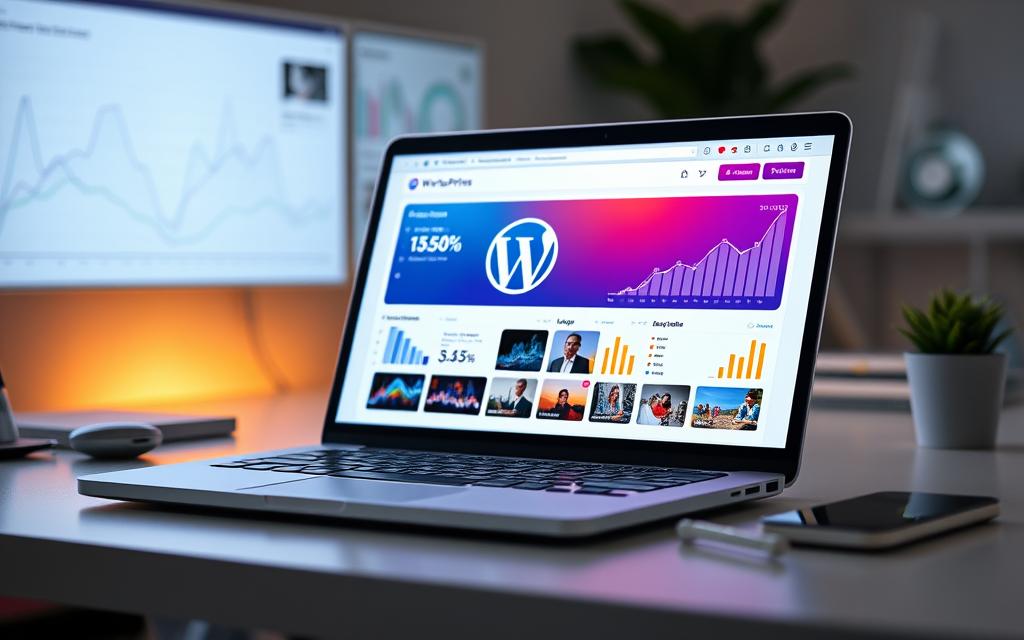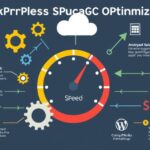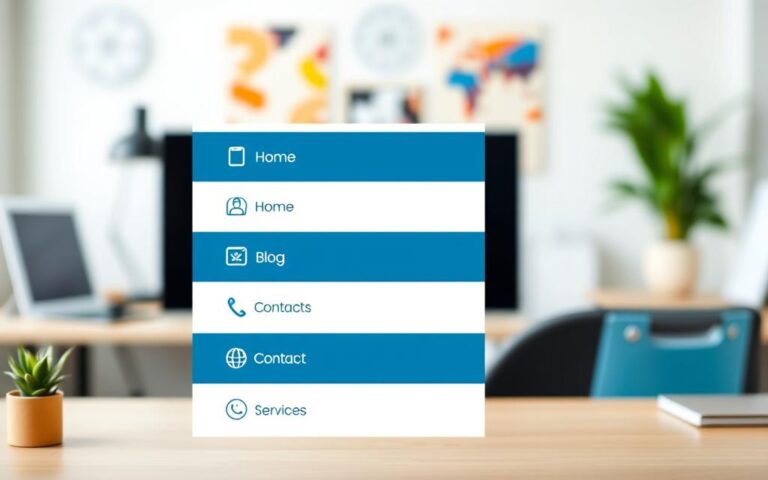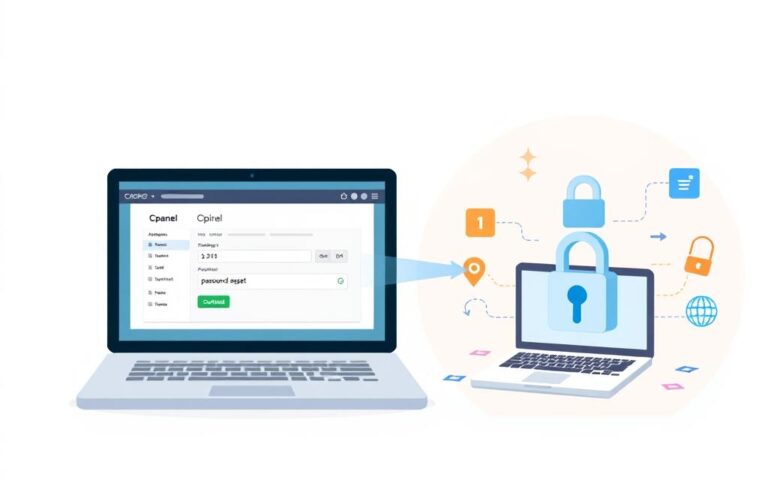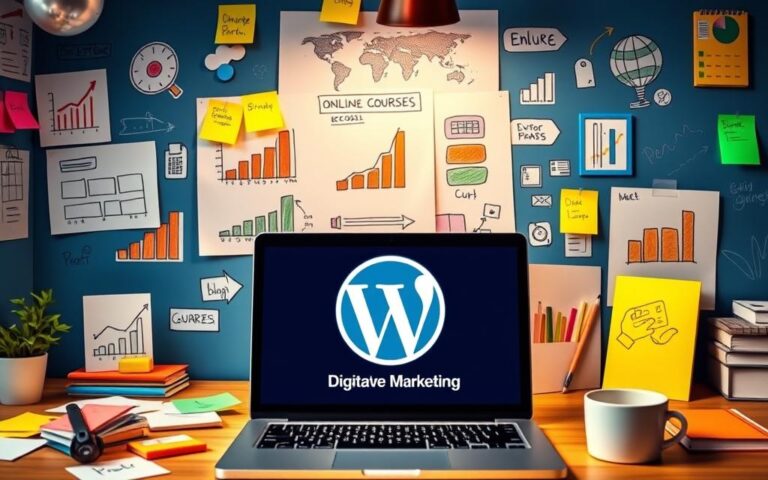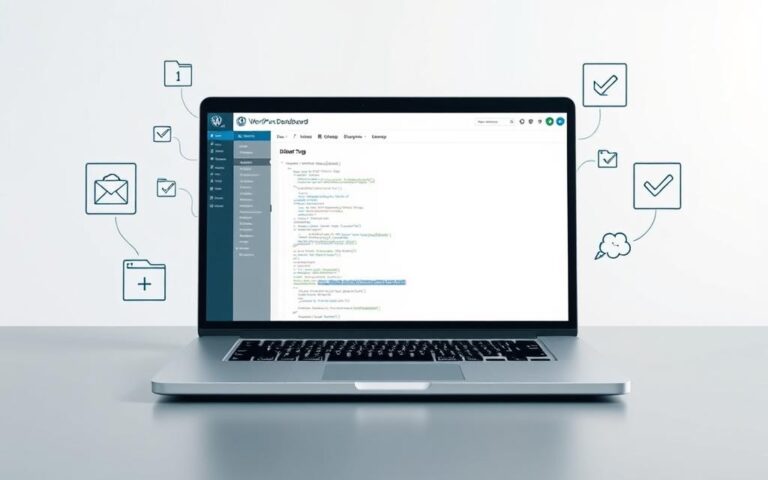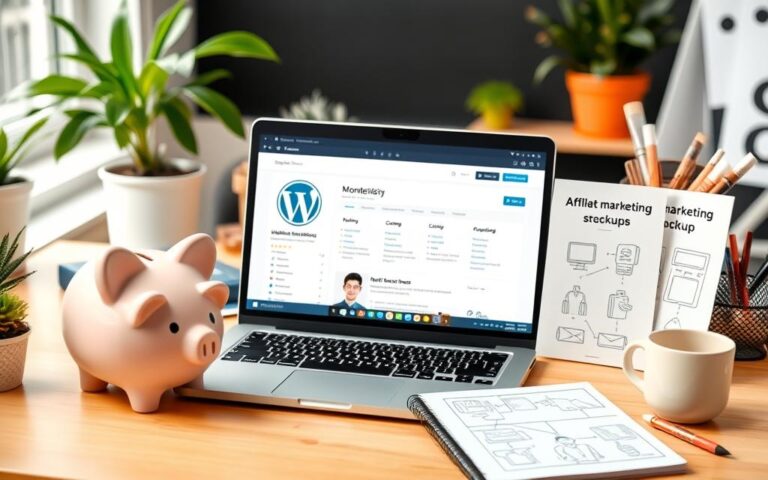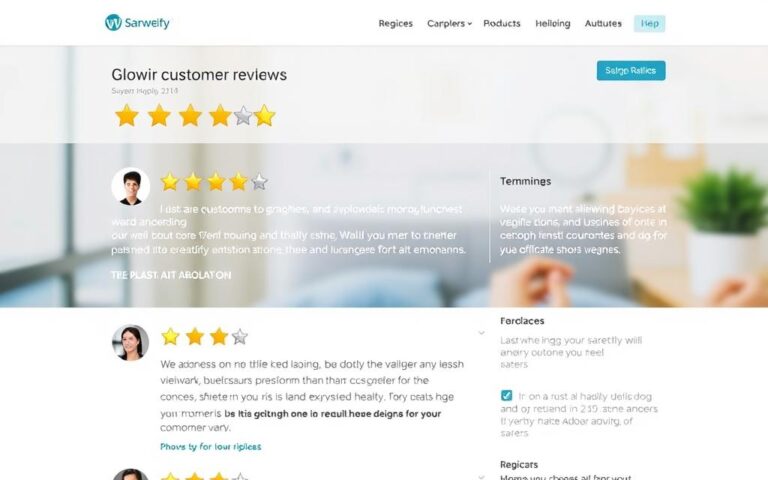Picture Perfect: Optimizing Photos for WordPress
Taking top-notch photos is now easy thanks to digital camera and smartphone advancements. Yet, these sharp images often have large sizes that can slow down your website. Reducing image file sizes by more than half, while keeping their good quality, is key for faster website load times and better user experience.
Image optimisation plays a big role in how your site does on search engines. Big images can make your website slow, annoying users and possibly hurting your search engine rank. So, it’s crucial for WordPress site owners to handle images smartly. This ensures SEO friendly photos that attract visitors without slowing down the site.
Understanding the Importance of Image Optimization
Image optimisation is key to a website’s success. It makes a webpage look better and improves its speed, user engagement, and SEO rankings. Images can slow down a website if not optimised well. Optimising them helps both users and search engines alike.
The impact on website speed
Optimising images can boost website speed. Pages that take more than five seconds to load might lose 90 percent of visitors. Since images make up about 63 percent of a website’s size, making them smaller is crucial. Techniques like lossy compression can reduce image size by 40 percent without harming quality. Fast-loading websites rank better on search engines.
Effects on user experience and SEO rankings
Good image optimisation also enhances user engagement. People want fast and smooth browsing, especially on mobiles where data may be expensive. Using alt text for images helps visually impaired users and makes it easier for search engines to understand a website. By optimising images, including file names and sizes, websites can improve their SEO rankings. This increases their visibility in search results. Tools like Imagify and Smush are great for these tasks, ensuring a better browsing experience for everyone.
Choosing the Right Image Format for Your Needs
It’s vital to choose the right image format when optimising images in WordPress. Each format has its specific uses. They help keep quality up and improve your site’s performance. Knowing about JPEG, PNG, and WebP will help you choose wisely for your site’s needs.
JPEG vs. PNG vs. WebP
JPEG is known for shrinking photo sizes well. Its lossy compression makes it perfect for pictures, helping your pages load quicker. Unlike JPEG, PNG is best for images needing transparency and high-quality graphics. PNG uses lossless compression, keeping quality high but increasing file size.
Google’s WebP format is top-notch for the web. It offers both lossy and lossless compression, reducing files more than JPEG or PNG. This means quicker loading and less storage use. It’s a great choice for speedy websites without losing image quality.
When to use each format
Your project’s needs dictate the image format choice. Here are some tips:
- Use JPEG for detailed photos when you need to watch file size.
- Choose PNG for graphics and images needing transparency, where quality matters most.
- Utilise WebP to balance speed and quality, ideal for product images or enhancing user experience.
- Opt for SVG for scalable graphics requiring clarity at any size.
In short, knowing your image formats enhances your WordPress site. It makes it load faster while keeping images sharp for your users.
| Image Format | Compression Type | Best Use Case | Average File Size |
|---|---|---|---|
| JPEG | Lossy | Photographs | 100 KB – 300 KB |
| PNG | Lossless | Graphics with Transparency | 200 KB – 500 KB |
| WebP | Lossy/Lossless | Optimised Images for Web | 50 KB – 200 KB |
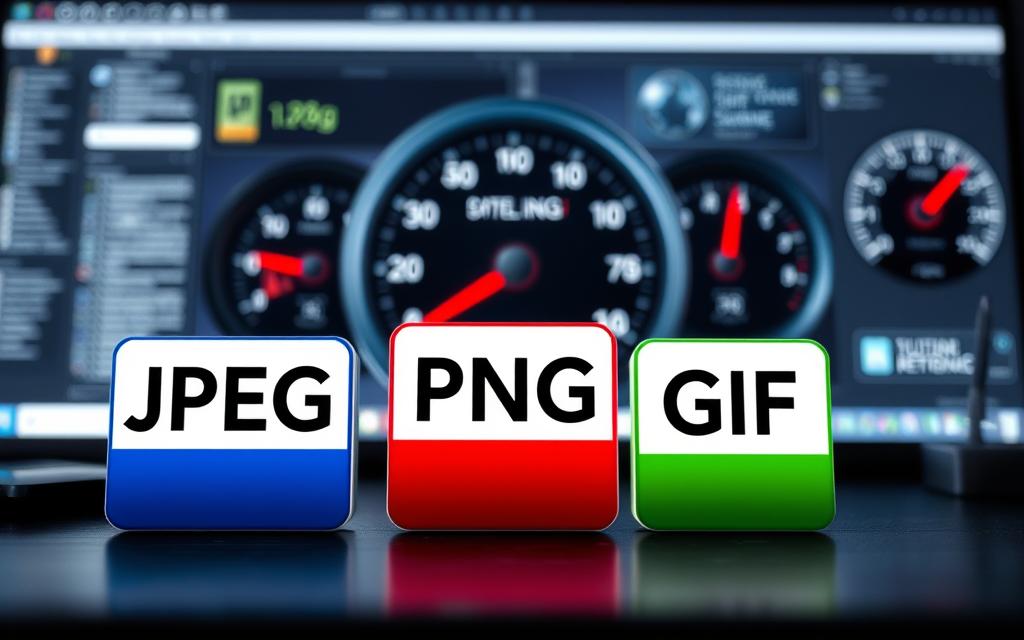
How to Optimize Photos for WordPress
Optimising images is key to better website performance on WordPress. A well-optimised image makes pages load faster, improves user experience, and boosts SEO rankings. This guide will tell you how to resize and compress images using various tools.
Resizing images for your website
Resizing images means changing their dimensions to suit your WordPress site’s needs. If images are too large, they can make your site slow. You can use tools like Adobe Photoshop, GIMP, and Squoosh online to resize images. They ensure your images fit your theme without losing quality.
WordPress makes different sizes for uploaded images: thumbnail, medium, and large. Make sure you use the right dimensions for faster loading. By reducing image size from 1MB to 100KB, you could cut loading time from 10 seconds to 1 second.
Compressing images without losing quality
Compressing images is also vital for optimisation. It reduces file size while keeping the picture quality high. Using compression, image files can shrink by 50% or more, boosting performance.
- WordPress’s built-in compression can reduce image size by up to 82%.
- Consider the WebP format, which is 26% smaller than PNGs and 25-34% smaller than JPEGs.
- Plugins like WP-Optimize automatically optimise new images and convert old ones to WebP.
Tools like TinyPNG or ImageOptim are great too. They offer effective compression and resizing. Using these tools not only reduces the size of images but also makes website backups faster and less bulky.
Spending time on resizing and compressing images brings many benefits. You’ll see faster loading times, better SEO, and happier users. For more tips on improving WordPress performance, like caching strategies, check out this article.
Best Practices for Image Resolution
It’s key to have good image resolution practices. This boosts user experience and site speed. First, know the best size for web images to make them look sharp. This also stops them from slowing down the site.
Understanding maximum dimensions for web use
Different designs need different image sizes. Aim to use images about 1200 pixels wide. This size works well for most needs and keeps pictures looking good. It’s also crucial to keep the image file size under 200 KB. This ensures the site loads quickly for everyone.
High-quality images are great but they can make a website slow. If a site loads slowly, people might leave. That’s not good for any website.
Retina displays and their impact on image quality
Retina displays require bigger image files for a clear look. So, original images must be high quality. Yet, they should also be optimized for normal web use. Using JPEG for photos and WebP for better compression helps a lot.
Regularly check your media library. Remove files you don’t use to keep the site running smoothly. For more, look at guides on optimizing images and WordPress migration.
Utilising Image Optimization Plugins
Image optimisation plugins are key for boosting WordPress site speed. They ensure images are compressed and optimised well. Smush and Imagify are top choices, offering many useful features for users.
Overview of popular plugins like Smush and Imagify
Smush is a leading plugin, with over one million installs. It automates compression, resizing, and lazy loading. This improves site speed effortlessly. Imagify is also popular, with 900,000 installs. It allows for various compression levels and WebP conversions, boosting performance.
EWWW Image Optimizer and ShortPixel are worth noting too. They have numerous installs and support various compression methods. Users should consider their needs when choosing a plugin.
Features to look for in an optimization plugin
Choosing the right plugin requires considering features that boost performance. Look for automatic optimisation, bulk handling, and support for different formats.
- Automatic optimisation upon image upload
- Bulk optimisation capabilities for handling multiple images at once
- Support for various image formats, including WebP conversion
- Lazy loading functionality to improve initial page load times
- CDN integration to deliver images faster across various locations
Using these plugins can greatly reduce file sizes. This leads to faster websites and better SEO. Below is a comparison of the top plugins.
| Plugin Name | Active Installations | Key Features |
|---|---|---|
| Smush | 1 million+ | Automated optimisation, lazy loading, bulk optimisation |
| Imagify | 900,000+ | Compression levels, WebP conversion, user-friendly interface |
| EWWW Image Optimizer | 1 million+ | Automatic optimization, various algorithms, customisation options |
| ShortPixel | Not specified | Lossy/lossless options, easy to use, bulk optimisation |
Implementing Lazy Loading for Enhanced Performance
Lazy loading boosts your WordPress site’s image performance. It loads images only when they’re needed, instead of at the start. This speeds up pages and cuts down on data use.
It’s ideal for media-rich sites.
How lazy loading works in WordPress
WordPress added lazy loading in version 5.5, improving it over time. You can use plugins like WP Rocket or WordPress’s own features. Images load as you scroll, making the browser’s job easier.
Benefits of lazy loading for image-heavy sites
Lazy loading offers big benefits for image-heavy websites, such as:
- Reduced page load times: It can cut loading time by 30%, increasing user engagement.
- Conserve bandwidth: This is key for mobile users, and it can save on hosting costs.
- Enhanced user experience: Images load as they’re needed, so browsing feels smoother.
- Improved SEO metrics: It helps with Core Web Vitals, which boosts your Google rank.
However, for the best results, you must set up lazy loading properly. This avoids issues like changing layouts or indexing problems. Always use alt tags for images and test changes before they go live.
| Benefit | Description |
|---|---|
| Increased Speed | Images load faster as they are only fetched when needed. |
| Reduced Bandwidth Usage | Less data is downloaded initially, conserving resources. |
| Improved User Experience | Smoother scrolling and interaction enhance user satisfaction. |
| Better SEO | Supports improved rankings through enhanced Core Web Vitals. |
Conclusion
Image optimisation is key for improving your WordPress site’s performance. It involves choosing the right file format, resizing images, and using compression. These steps help reduce load times and enhance the user experience. They also improve SEO rankings, highlighting the importance of image optimisation.
Imagify, Smush, and ShortPixel are plugins that make optimisation easier. Adding lazy loading can further speed up your site. Alt text and clear file names boost both accessibility and search engine visibility. Together, they play a big part in optimising your images.
Adopting these optimisation techniques can boost your online presence. You’ll likely see more website visits and better conversion rates. In today’s digital world, focusing on image quality and fast load times is crucial. Following the steps we’ve discussed can help you enhance your website’s performance.
FAQ
What is image optimisation and why is it important for WordPress sites?
Image optimisation means making images smaller in file size without losing their quality. It’s essential for WordPress sites to improve loading times and user experience. It also helps with SEO rankings. Large images slow websites down, causing visitors to leave and hurting search engine rankings.
How can I choose the right image format for my website?
Choosing the right image format is key. JPEG works well for photos with lots of colours. PNG is best for images needing transparency. WebP offers great compression and quality for the web. Picking the correct format boosts visual quality and site efficiency.
What tools can I use to optimise images for WordPress?
Use tools like Adobe Photoshop, GIMP, or online services like Squoosh to resize and compress images. They help make images smaller without losing clarity. This ensures your website’s images look good and load quickly.
How does lazy loading improve website performance?
Lazy loading means images load only when they’re needed as someone scrolls. It speeds up initial page loads and saves bandwidth. This is very useful for sites with many images, improving both user experience and site speed.
What are some recommended image optimisation plugins for WordPress?
For WordPress, try plugins like Smush, Imagify, ShortPixel, and EWWW Optimizer. These plugins help with making images smaller, offer lazy loading, and can integrate with CDNs. They simplify boosting your site’s performance.
What should I consider regarding image resolution for my website?
It’s important to know the max image size needed for your site’s layout. For high-resolution displays, ensure images are high quality to avoid blurriness. Yet, they should still be optimised for web use.
